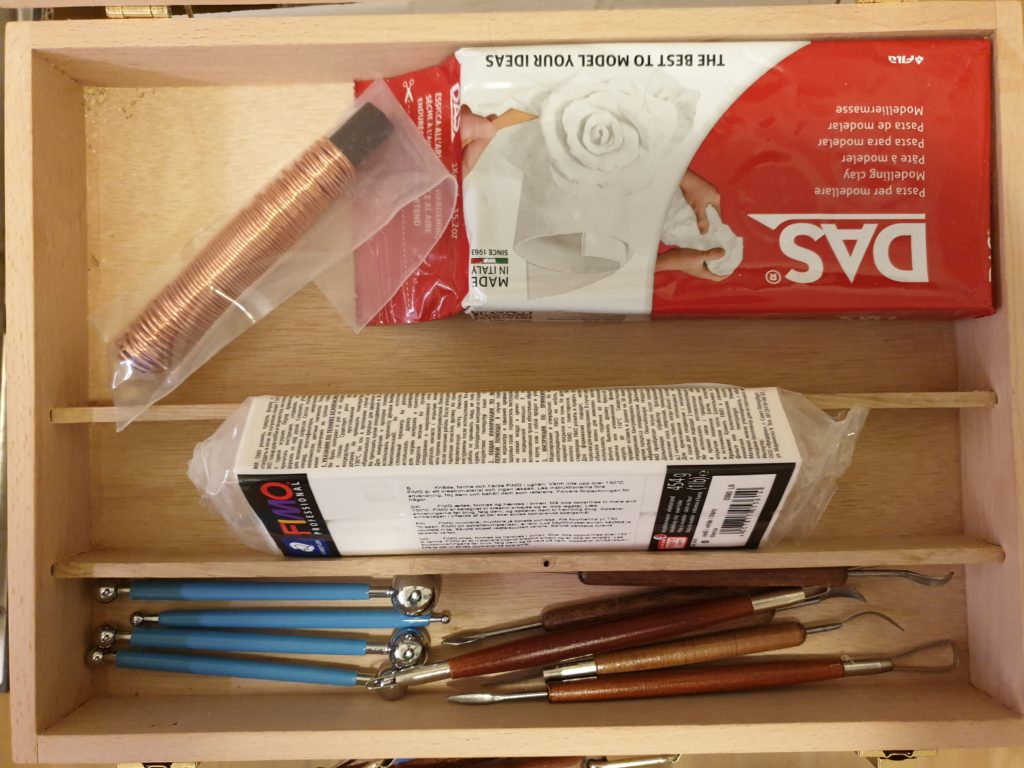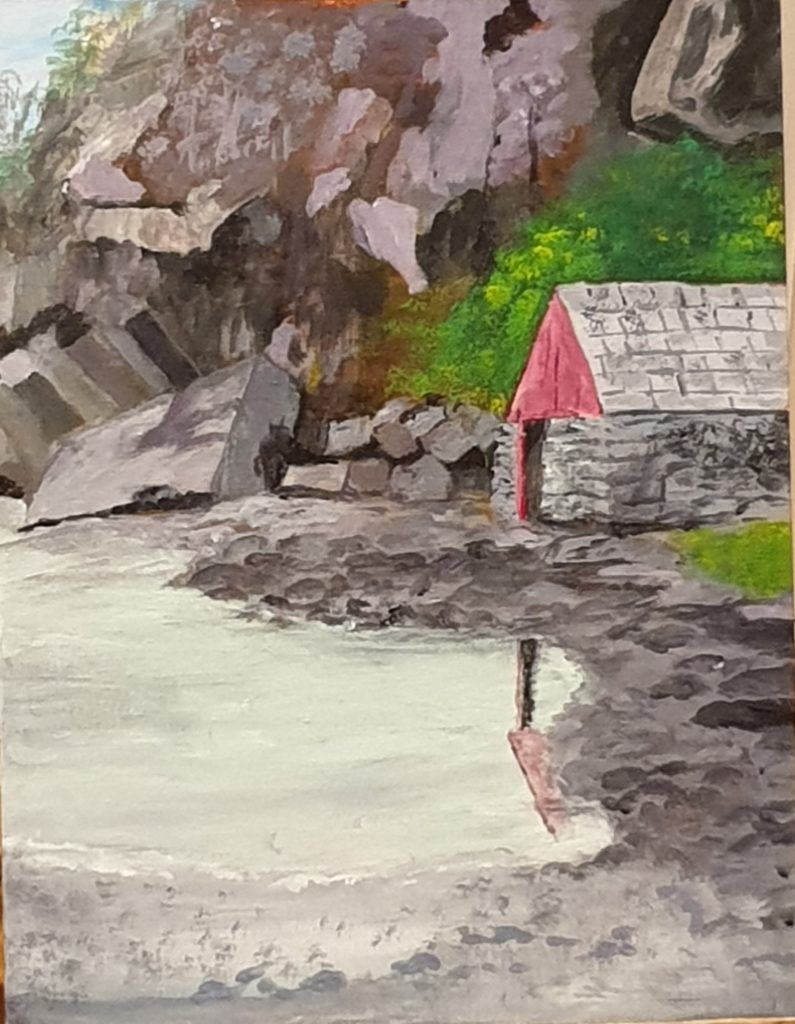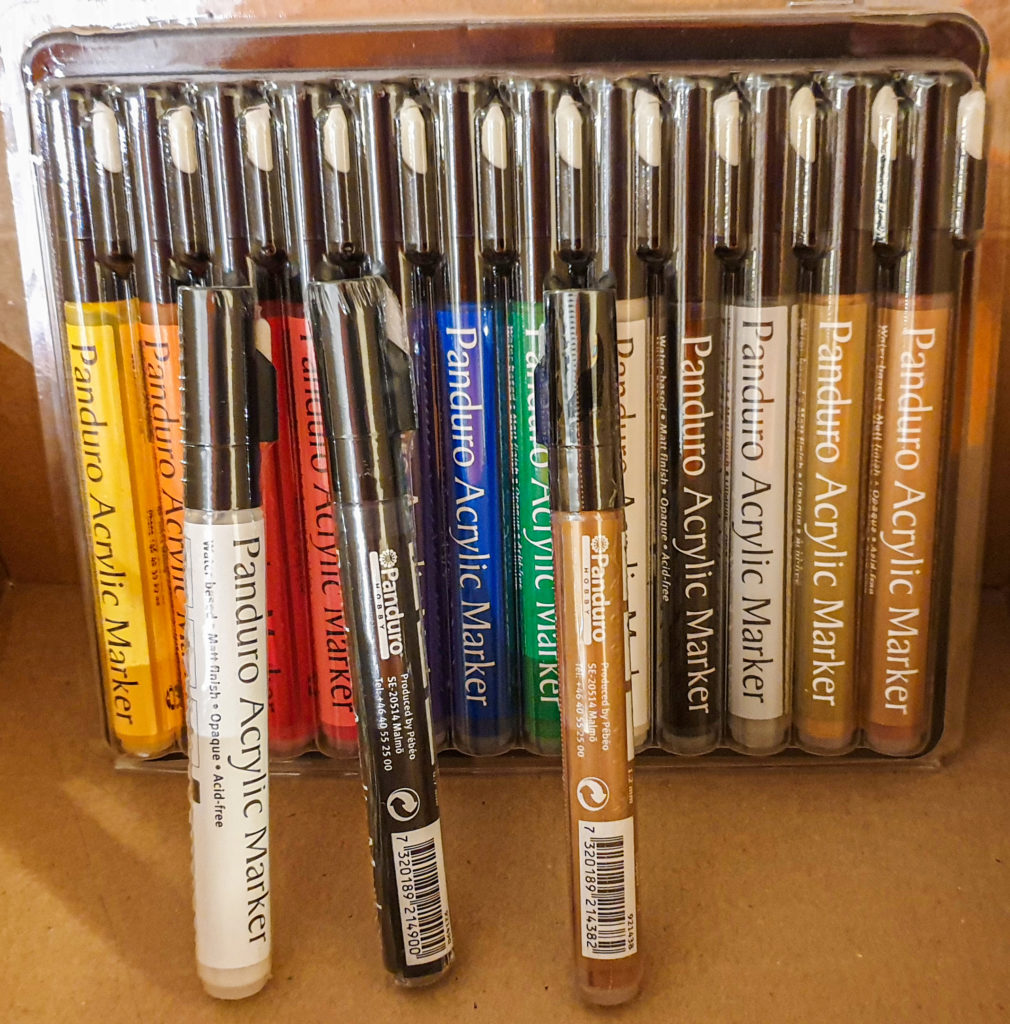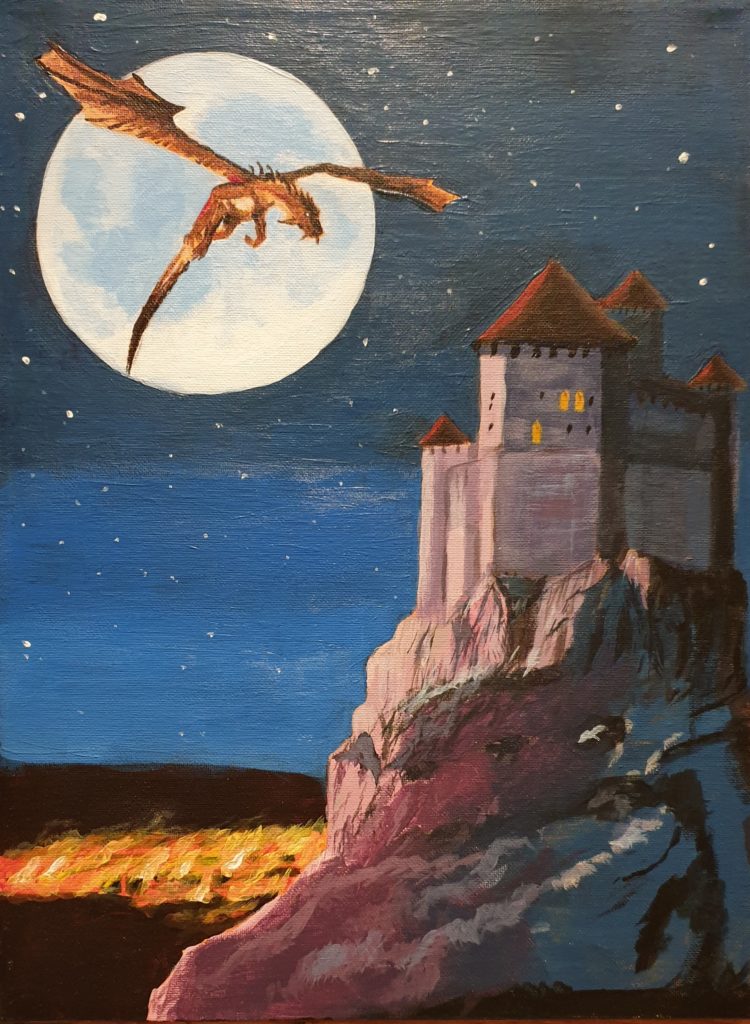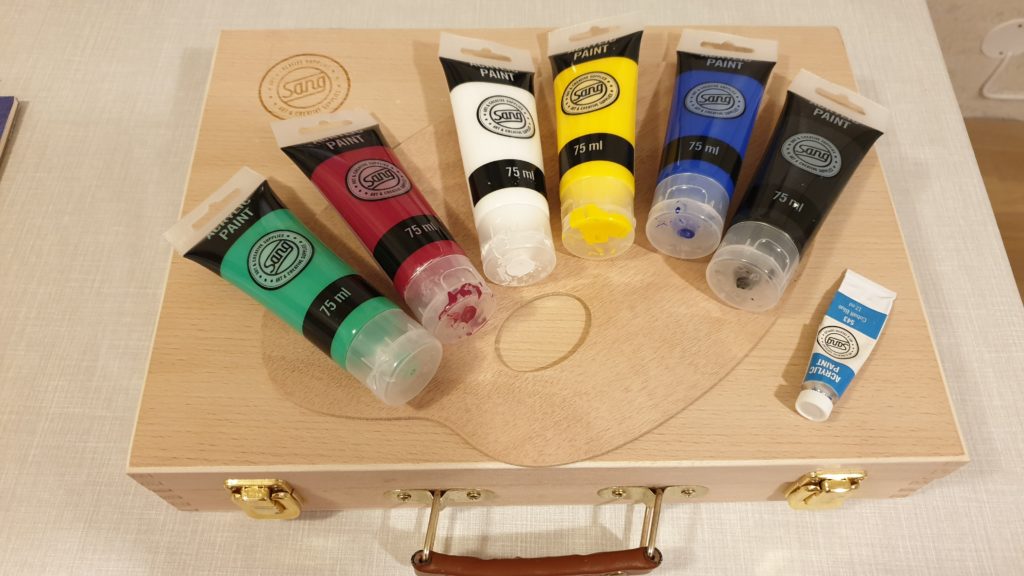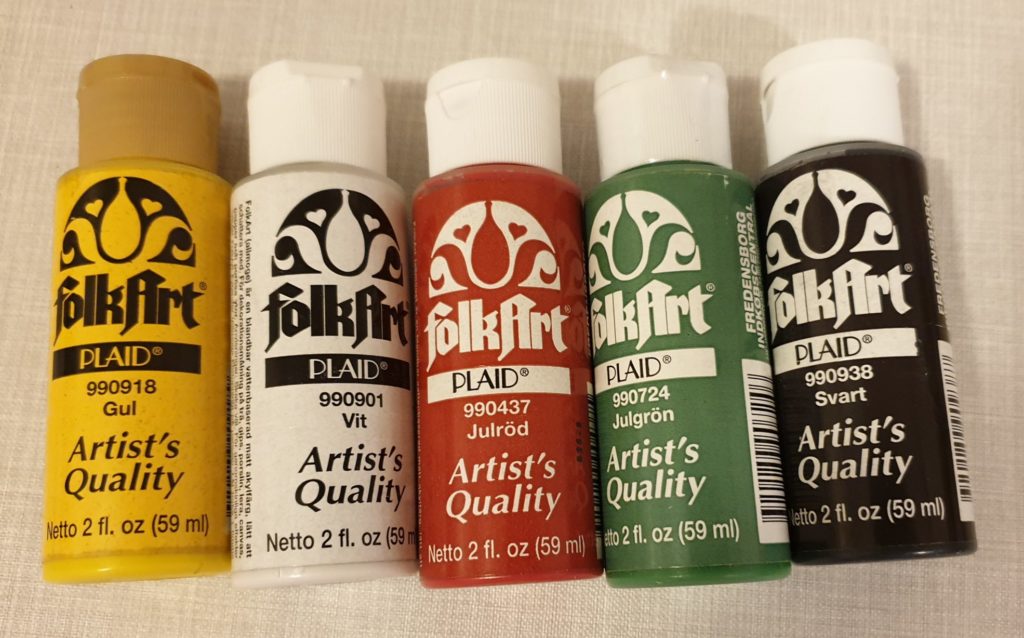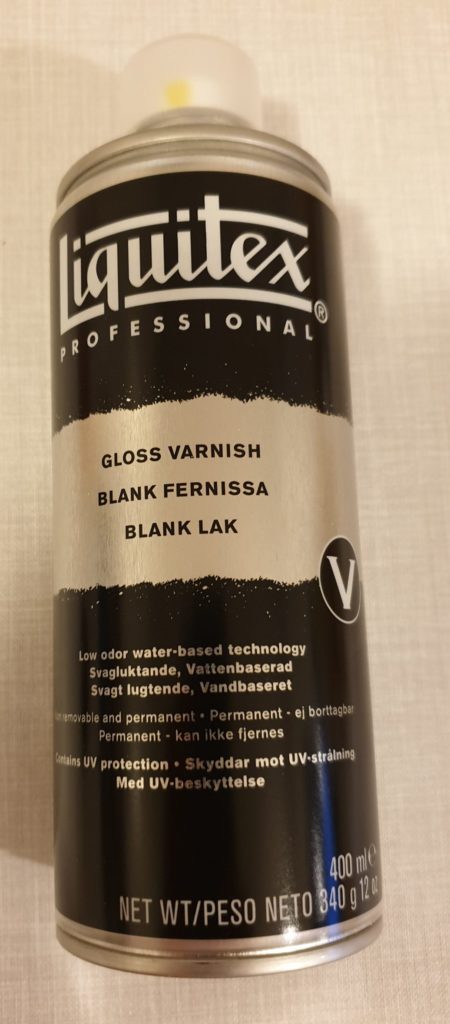I guess we all have seen various optical illusions; drawings that can be seen as two different things at the same time, images where the shapes also seem to hide or form other figures, geometrical constructs where the angles seem to be OK, but at the same time are completely impossible.
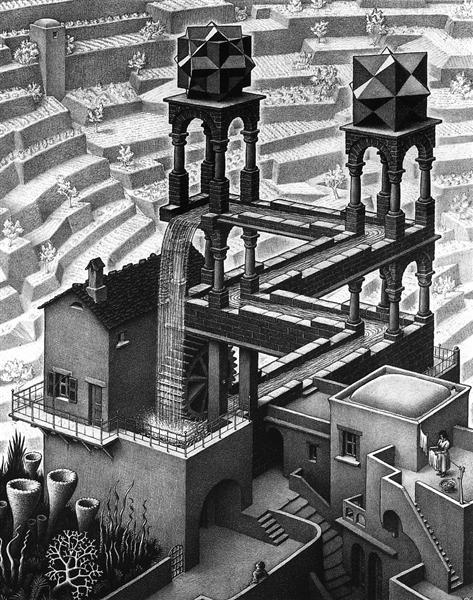
One well-known artist of the impossible geometry is the Dutch Maurits Cornelis Escher. Way more can be said of him and his art than I will do, other than that he serves as the inspiration for one of my paintings in progress.
The image I’m thinking of is “Waterfall” – impossible geometry where the water flows down in an aqueduct all the way, and ends up in a water all down into the beginning of the same aqueduct. All the action takes place in a limited space, and it’s easy to see how it’s done. But in my mind, I was playing with the idea of taking the same principle and transfer it into nature, making a believable picture, despite the water flowing downwards all the time, in a circuit with several waterfalls. Would it be possible?
I had a rough idea, sketched it on paper, just as rough, and decided that yes, it would be possible. Then I had to decide if I should make a more detailed sketch, using photos and stitch together something in Photoshop, or just start painting, with that rough sketch as my starting point. I went for the latter option, as the rest would have me spend way too long time before I could start painting at all.
It started out nice and quick. I blocked in the colours for the first shapes; sky, mountains, water, ground. Added some more details after I decided where the light should come from. Made the river flow from the lake in the distance towards a lake in the foreground, with some waterfalls on the way to make it obvious. Then the time came for me to make the river flow back, down from the current low point to the starting high point …
OK. It’s easy enough to make the river flow downwards, but it should also look natural. I spent some time thinking of this. It started getting hard …
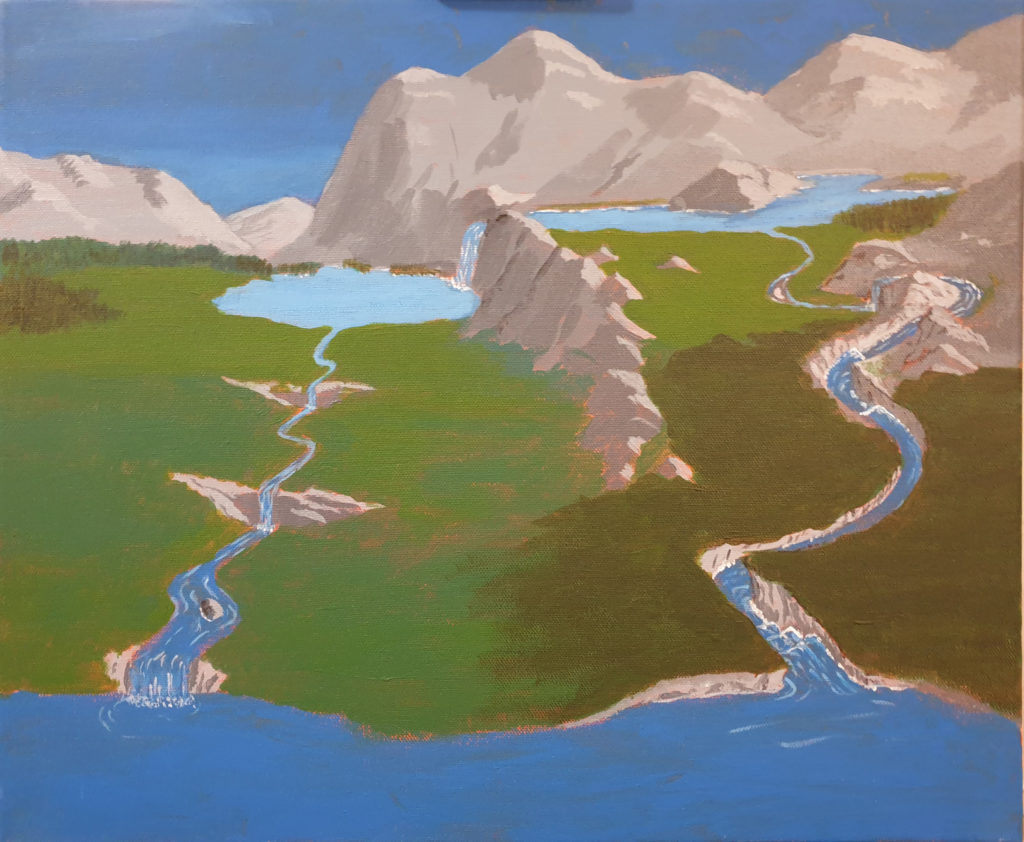
As it is still a work in progress, I’m not finished. By far.I’ve blocked in the main colours, so I see the shapes and things are getting clearer. There’s still a lot of details that need to be painted though, but there is one thing that’s getting very clear to me: I was overly optimistic about the time I would use on it. There’s more thinking to do than expected, to make it look convincing. So much that it has been hard to sit down and do some actual painting. There are other pictures I want to try, too, so maybe I’ll just start that before I finish this one. Luckily, that’s very much allowed. Getting my spirits high on painting something that doesn’t require this much thought can only be of the positive, and it’ll make it easier to start on this one again. I hope.
Sounds like I’m trying to convince myself here, but in any case, I’ll have to get some painting done again, and show it.



